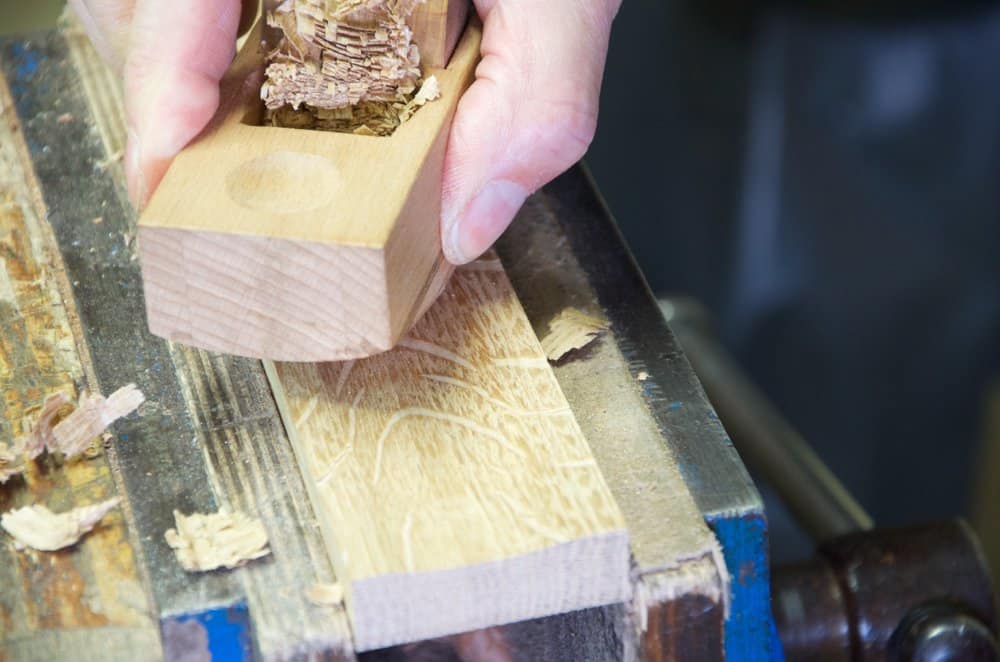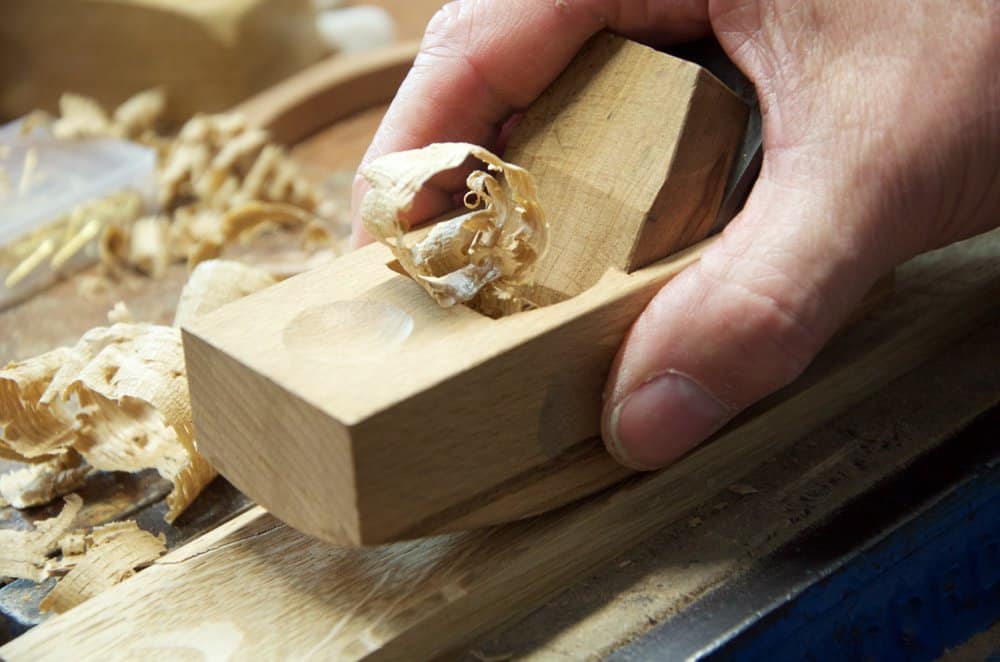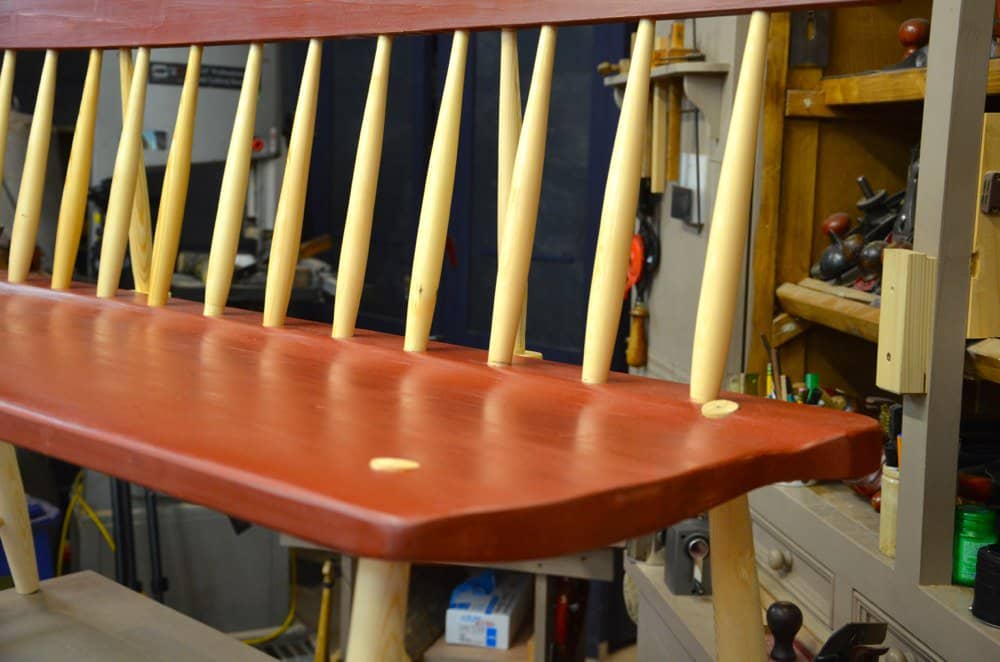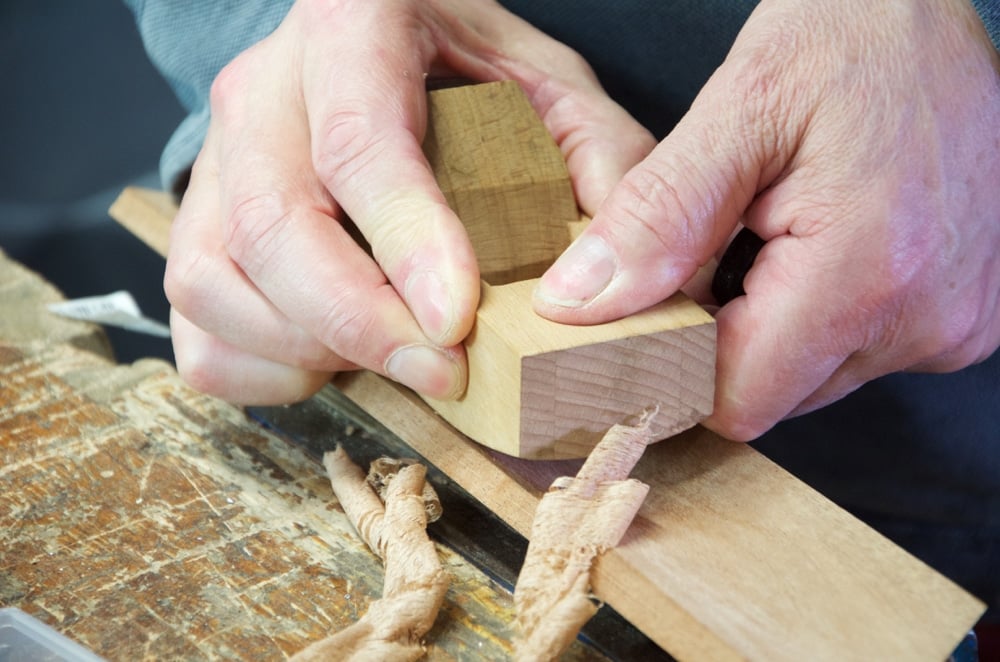Use for round-bottomed planes
For more information on planes, see our beginner site Common Woodworking.
Question:
Paul,
I was hoping you would explain why that (nice) little plane was rounded in both ways. I inherited an ancient plane from my grandparents with the same rounding both ways, but bigger than the one you made. I haven’t been able to figure out what this plane was used for and this is the first time i’ve seen one in action, so I’m hoping you could help me with some insight. I’m thinking if it was made for making coves it would surely be rounded only across the sole of the plane, while it would be flat along the length of the plane?
Answer:
Others have asked the same question and here is an answer:
Large crown moulding planes were made by the original wooden planemakers, which were of course people like myself. In the pre specialist plane maker era in the 1600- 1700s, joiners mostly made their own planes. 

Even when made from a single piece of wood the work is simple enough, but making them as we show on our woodworkingmasterclasses for free here. You will need to subscribe but it’s free though. We made this particular plane when we taught stool making and used the plane to shape a seat so any input so far is partially correct. Following that we used the same plane for making the Shaker Deacon’s bench with its shaped seat and long coved back that ran full length of the bench seat. I have used the same plane without alteration on half a dozen other projects and for creating this coving I personally think that it knows no equal.
It might be said that the plane would work better if the sole were straight and round one way only. This seems to make sense in that the profile will automatically be straight because of the sole being straight.

One thing about this very inexpensive plane is that the length can be altered so that the plane can be skewed to maximise effectiveness and also the profile.
Also, depending on the length of the curve and the radius, but more even than that, and I forgot to put it in here originally, by tilting the plane forwards or backwards you can micro adjust the depth of cut for each swipe you take too and so negate the need for altering the depth of cut manually for 90% of the work.



Paul, read your answer through a couple of times but could not really identify the reason for the plane being rounded along the axis – other than possibly it enables the plane to be skewed within the cove. Is this correct?
Yes, depending on the length of the curve and the radius, but more even than that, and I forgot to put it in, by tilting the plane forwards and backwards you can micro adjust the depth of cut for each swipe too and so negate the need for altering the depth of cut manually for 90% of the work.
Got it… thanks.
Paul,
Do you have a video on the making of this plane?
Here is the link to the first one in the series.
Mr. Sellers:
You stated that, “One thing about this very inexpensive plane is that the length can be altered so that the plane can be skewed to maximise effectiveness and also the profile.”
You know what that means. Mr. Sutton, above, figured out at least part of what it means, and your response to him clarifies things a bit more. If I understand correctly (always a suspect assumption on my part), I think something is getting lost here in the commentary, although shown clearly in an above photo:
The primary reason for curvature in two axes, athwartships and fore and aft, is that the planes is originally intended to carve out shapes in compound curves, as in the formed “fanny recess” in the chair seat. Good performance in cutting a cove is, I think, a happy extra, whether an original intent or not. And by skewing the plane to control the arc shape and tilting fore and aft to control the depth of cut are important in both compound curved shapes and coves (which are simple curves if cut with a steady hand, as you have done).
Paul, the link for the plane episodes you provide requires me to log in as a subscriber (which I am), but when I do, it denies me access to the content, telling me that it can be accessed only by paying subscribers (which I’m not). So…is it free, or…..?
It looks as though you are right. We usually give all of the how tos and techniques as free videos. I can find out if we are doing that in this case in the New Year. It is a series that was part of making the bench stool.
Here is the link.
Well Paul, as fate would have it, I purchased on EBay what I thought was a “normal” short (6″) smoothing plane. What it turned out to be was actually a smoothing plane which is curved along the longitudinal axis. I’m thinking now that by grinding and sharpening the blade properly I would then have a plane that would be able to plane coves.
Seems things do work out in the end.
Thanks!
Great, coves on their way!
Hi Paul,
I recently put a question at the end of the third episode of making the radius plane.
I commented that the Australian wooden plane maker HNT Gordon suggested that by turning the blade around (their blade is set at 55′), the plane then makes a very effective Scraper for working “very hard canky woods.”
Have you any experience using the plane in this way?
I have done this with a #4 plane using a scrub plane on very rare occasions, yes. Sometimes it works and sometimes not.
Evening Paul,
Great blog again. Where do you, would you get the irons for the smaller handmade planes?
Thanks
I make them, usually. There is an episode in the WWMC series for free again.
super – thank you
I was offered such a plane at a vintage stall a couple of weeks ago. I declined it, not knowing anything about them and not seeing an obvious use for it.
Yesterday, on the TV show Flog It!, the presenter, Paul Martin, visited a chap who teaches wooden boat-building classes at the historic Buckler’s Hard in/near the New Forest, Hampshire. He had an unusual name for the small “round-bottomed” plane, which escapes me now. He said he made it himself and that all those doing his course would make their own as part of the coarse. He showed it being used to hollow/smooth the inside of a oar’s curved blade.
I wonder if this plane is functionally equivalent to a Travisher, scrop, a medium-to-low sweep gouge or, perhaps even, a “goose-neck” card scraper?
Oops. Typos: that was supposed to read “scorp” not “scrop”! And “an oar” rather than “a oar”.